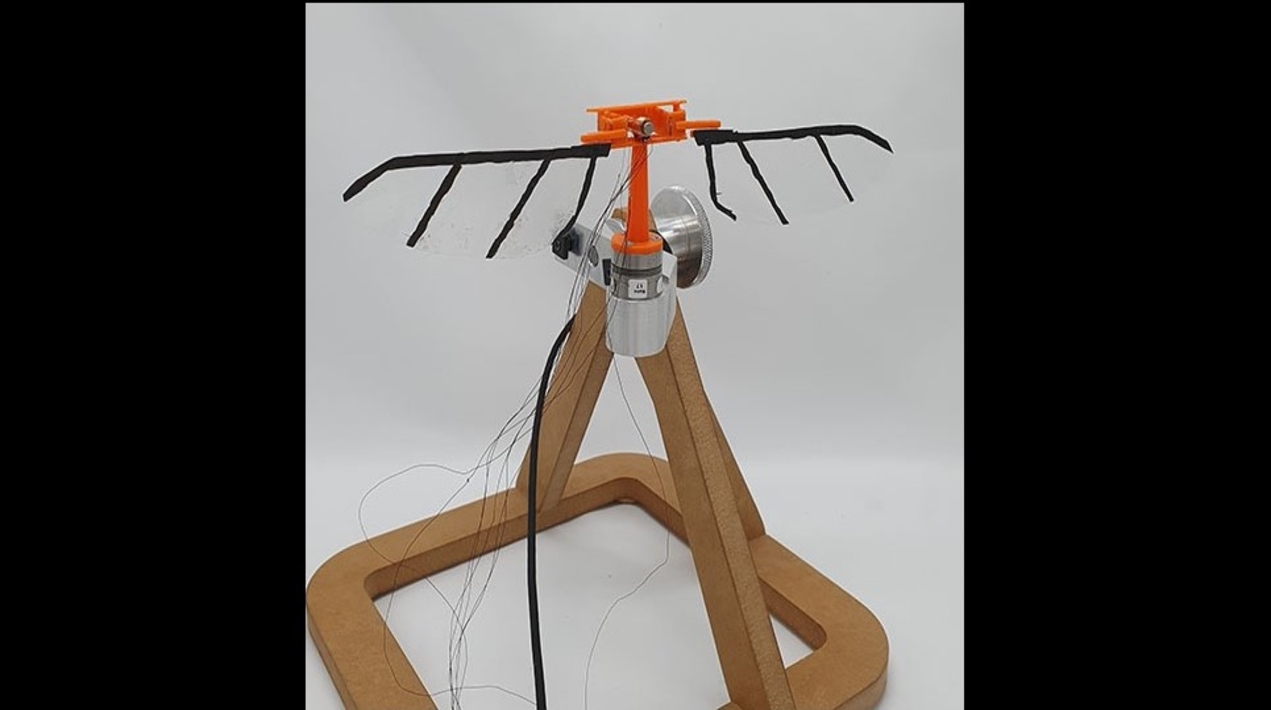
University of South Australia researchers have drawn inspiration from a 300-million-year-old superior flying machine – the dragonfly – to show why future flapping-wing drones will probably resemble the insect in shape, wings and gearing.
A team of PhD students led by UniSA Professor of Sensor Systems, Javaan Chahl, spent part of the 2020 COVID-19 lockdown designing and testing key parts of a dragonfly-inspired drone that might match the insect’s extraordinary skills in hovering, cruising and aerobatics. The UniSA students worked remotely on the project, solving mathematical formulas at home on whiteboards, digitising stereo photographs of insect wings into 3D models, and using spare rooms as rapid prototyping workshops to test parts of the flapping wing drone.
Their findings have been published in the journal Drones. Describing the dragonfly as the “apex insect flyer,” Prof Chahl says numerous engineering lessons can be learned from its mastery in the air. “Dragonflies are supremely efficient in all areas of flying. They need to be. After emerging from underwater until their death (up to six months), male dragonflies are involved in perpetual, dangerous combat against male rivals. Mating requires an aerial pursuit of females and they are constantly avoiding predators. Their flying abilities have evolved over millions of years to ensure they survive.”
Dragonflies can turn quickly at high speeds and take off while carrying more than three times their own body weight. They are also one of nature’s most effective predators, targeting, chasing and capturing their prey with a 95 per cent success rate.
The use of drones has exploded in recent years – for security, military, delivery, law enforcement, filming, and more recently health screening purposes – but in comparison to the dragonfly and other flying insects, they are crude and guzzle energy.
The UniSA team modelled the dragonfly’s unique body shape and aerodynamic properties to understand why they remain the ultimate flying machine.
Because intact dragonflies are notoriously difficult to capture, the researchers developed an optical technique to photograph the wing geometry of 75 different dragonfly species (Odonata) from glass display cases in museum collections.
In a world-first experiment, they reconstructed 3D images of the wings, comparing differences between the species. It was noted that dragonfly wings are long, light and rigid with a high lift-to-drag ratio which gives them superior aerodynamic performance.
Their long abdomen, which makes up about 35 per cent of their body weight, has also evolved to serve many purposes. It houses the digestive tract, is involved in reproduction, and helps with balance, stability and manoeuvrability. The abdomen plays a crucial role in their flying ability.
The researchers believe a dragonfly lookalike drone could do many jobs, including collecting and delivering awkward, unbalanced loads, safely operating near people, exploring delicate natural environments and executing long surveillance missions.
Prof Javaan Chahl has a joint appointment with the Defence Science and Technology Group. The other researchers involved in the project included UniSA PhD students Nasim Chitsaz, Blake McIvor and Titilayo Ogunwa; UniSA engineer Timothy McIntyre; Jia-Ming Kok (DST Group) and Dr Ermira Abdullah (University Putra Malaysia).
According to recent market research, the global commercial drone market size was valued at US$13.44 billion in 2020. It is expected to expand at a compound annual growth rate (CAGR) of 57.5% from 2021 to 2028. In terms of volume, the demand was recorded at 689.4 thousand units in 2020.
Drones are used for multiple applications ranging from filmmaking to emergency response. In the wake of the COVID-19 outbreak across the globe, there has been a considerable increase in the utilization of drone technology across various scenarios, with drones proving to be of immense assistance in such situations.
Drones are being widely adopted in the healthcare sector for lab sample pickup and delivery as well as transportation of medical supplies for reducing transportation turnaround time and curtailing the exposure to infection. As per the UNICEF, so far, more than eighteen countries have deployed drones for delivery and transportation purposes during the pandemic.
















